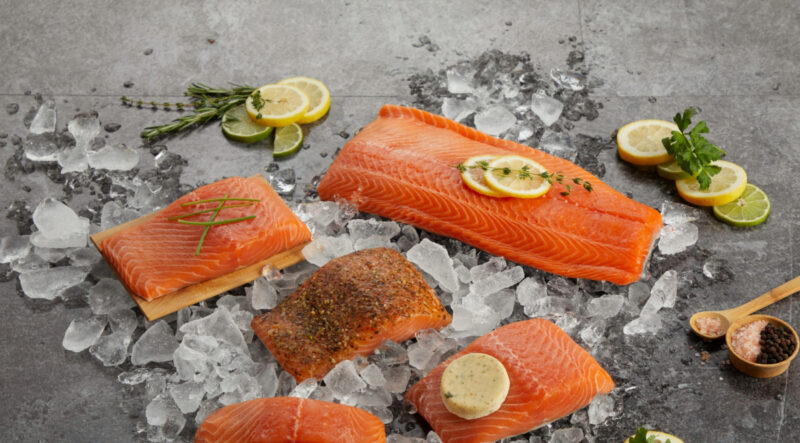Affordable, sustainable home-grown salmon being taken from Canadians
“Canadians have said again and again that they want access to more Canadian-produced food. In the case of Canadian-raised salmon, they’re being denied and are seeing less and less,” – CAIA.
By Fabian Dawson
SeaWestNews
Government mandated fish farm closures in British Columbia have caused salmon farming production levels to plummet, leaving Canadians with fewer affordable meal options.
While farm-raised salmon remains the most popular seafood choice of Canadians, it is increasingly being replaced by salmon flown in from other countries at higher prices and a larger carbon footprint, said the Canadian Aquaculture Industry Alliance (CAIA).
Farm-raised salmon production in Canada fell from a peak of 148,000 metric tonnes (mt) in 2016 to 90,000 mt in 2023, said CAIA, as it called on the Federal Government to enable salmon farmers to regain lost production.
“This reduction from the peak in 2016 adds up to the equivalent of eliminating more than 390 million salmon meals in total, and when considering Canadian-raised salmon that is not exported, removing 192 million salmon meals from the dining tables of Canadian households,” said CAIA in a statement.
The replacement of Canadian salmon in the North American market by Chilean and Norwegian salmon shows that the reduction in Canadian salmon supply has added the carbon equivalent of 81,609 gasoline-powered cars to North American roads, it said.
“Canadians have said again and again that they want access to more Canadian-produced food. In the case of Canadian-raised salmon, they’re being denied and are seeing less and less,” said Tim Kennedy, President & CEO of CAIA.
“The farm closures in BC since 2020 have not been based on science and have not put Canadian consumers’ best interests and health first. The peer-reviewed science consistently shows salmon farms have a less-than-minimal impact on wild salmon and salmon is one of the healthiest products for consumers,” he said.
“For a country with so much potential, the overall reduction of Canadian-raised salmon is staggering…We are ocean farming less than 1 per cent of the viable area along our coastlines and producing less and less of an important domestic food supply.”
The alarming 2023 salmon farming production numbers come at a critical juncture for the aquaculture industry in BC as the Federal government considers renewing salmon farming licences which expire this Spring pending the formulation of a Transition Plan for the sector in the province.
The Liberal government, at the behest of activists, has already shut down 40% of salmon farms since 2020, increasing carbon emissions and wiping out jobs that are the lifeblood of rural, coastal and Indigenous communities.
Before the shutdowns the salmon farming sector was the largest agri-food export in British Columbia. The sector employed approximately 6,500 people, produced close to 500 million salmon meals per year, received inputs from over 1,000 individual suppliers and had an economic value of $2 Billion.
Today, 100 per cent of BC’s farmed salmon is raised in agreement with Rights Holder First Nations. The partnerships directly and indirectly employ over 700 Indigenous people and provides $120 million in total annual direct and indirect economic benefits to First Nations, with $42 million going directly to Indigenous communities.
For many years, Canada has been the fourth largest salmon producer in the world behind Norway, Chile and Scotland. Norway’s salmon production was 1.55 million mt in 2022, 17 times larger than Canada’s 2023 production.
The drastically reduced 2023 production numbers leave Canada defending its fourth position with Australia and Faroe Islands very close (2022 production for those countries was 77,600 mt and 89,100 mt, respectively).
This is despite Canada having the world’s longest coastline and far more bio-physical potential than these other nations to lead the world in sustainable seafood farming, said CAIA.
The U.N. Food and Agriculture Organization (FAO) is also calling on countries to increase aquaculture production to fight global hunger and undernourishment.
The UN food agency said it hopes to see 35% growth in the sector by 2030 as part of the FAO’s “Blue Transformation” road map, which seeks to change the world’s aquatic food systems by the start of the next decade.
In its country profile on Canada, FAO states there is potential for significant increases in Canadian aquaculture production to hike domestic supplies and create export opportunities.
(image courtesy of Mowi)

